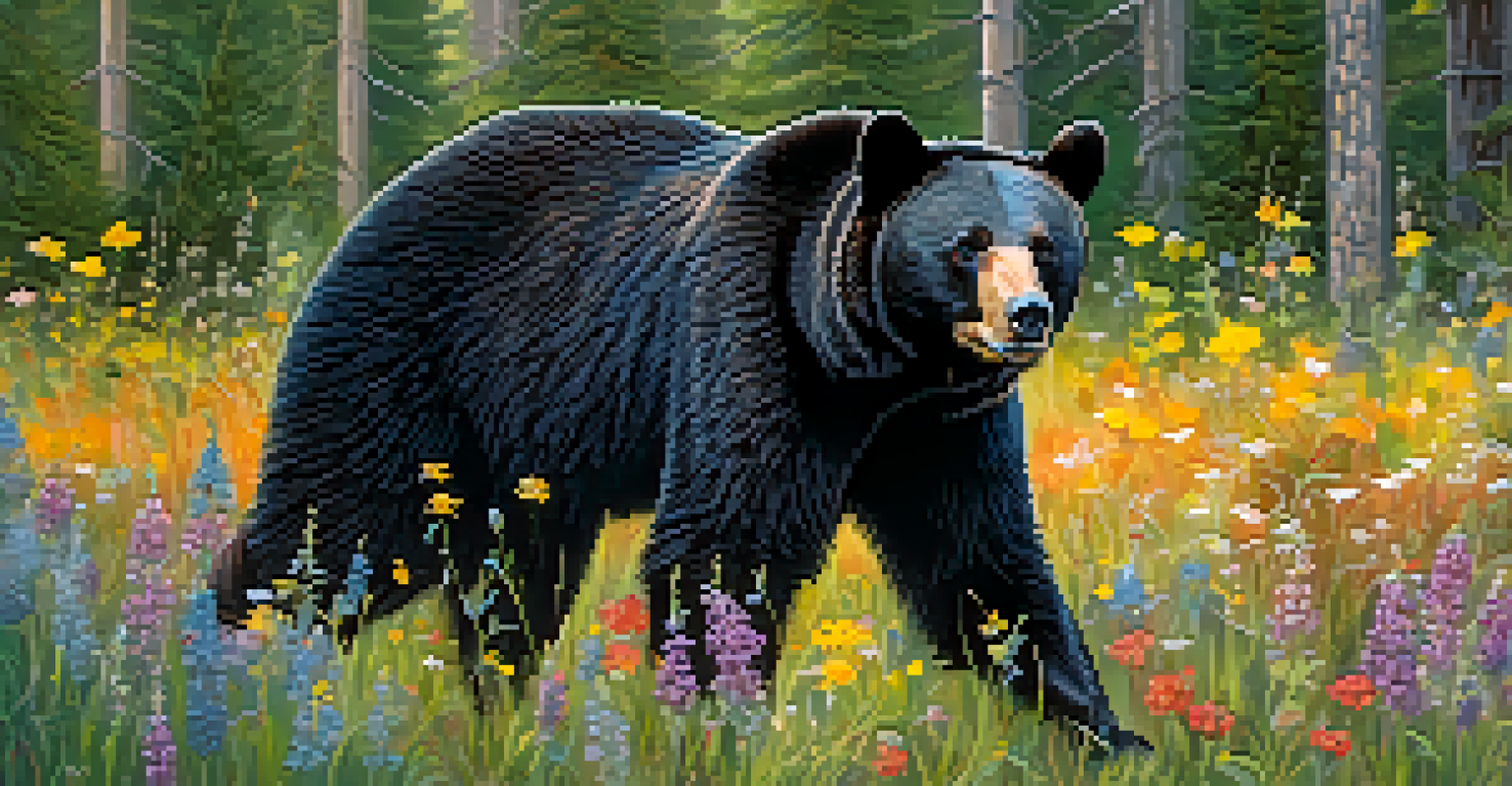The Importance of Local Ecology on Big Bear Nature Walks

Understanding Local Ecology: A Foundation for Nature Walks
Local ecology refers to the relationships between organisms and their environment within a specific area. In Big Bear, this means understanding how native plants, animals, and their habitats interact. This foundational knowledge not only enriches our experience during nature walks but also fosters a deeper appreciation for the natural world around us.
In every walk with nature one receives far more than he seeks.
When you step onto a trail in Big Bear, you're walking through a complex web of life. From towering pines to tiny insects, each element plays a crucial role in maintaining the local ecosystem. By learning about these connections, walkers can see beyond the surface and recognize the importance of preserving these natural spaces.
Additionally, understanding local ecology can enhance our ability to identify various species we encounter. Whether it's spotting a rare bird or learning about the medicinal properties of a local plant, this knowledge transforms a simple walk into an educational adventure.
The Unique Flora of Big Bear and Its Significance
Big Bear's unique flora includes a variety of plant species that thrive in its alpine environment. These plants, such as the Jeffrey Pine and various wildflowers, are adapted to the local climate and contribute to the overall ecosystem. By recognizing and appreciating this biodiversity, nature walkers can gain insights into how these plants support wildlife and maintain ecological balance.

For example, the blooming of wildflowers in spring not only beautifies the landscape but also provides critical food sources for pollinators like bees and butterflies. Understanding these relationships emphasizes the importance of preserving these habitats, ensuring that future generations can also enjoy their beauty.
Local Ecology Enhances Nature Walks
Understanding local ecology enriches our outdoor experiences by revealing the intricate relationships between plants, animals, and their habitats.
Moreover, local flora plays a vital role in soil conservation and water management, which are crucial for maintaining the health of the ecosystem. By learning about the plants we encounter, we become advocates for their protection and the conservation of our natural resources.
Fauna of Big Bear: Understanding Wildlife Interactions
The wildlife in Big Bear is as diverse as its flora, featuring species such as black bears, deer, and numerous bird species. Learning about these animals and their behaviors can significantly enhance our nature walk experience. For instance, understanding bear behavior can help walkers know how to safely coexist in their habitat.
The earth has music for those who listen.
Wildlife interactions are complex and often involve predator-prey relationships, migration patterns, and mating rituals. By observing these interactions, nature walkers can witness the dynamic balance that exists within the ecosystem. This not only enriches our experience but also highlights the importance of protecting these species for ecological health.
Additionally, understanding local wildlife encourages responsible practices among nature enthusiasts. Recognizing the importance of keeping a safe distance from animals, not feeding them, and respecting their habitats helps ensure that these creatures thrive in their natural environment.
The Role of Conservation in Local Ecology
Conservation efforts play a critical role in maintaining the ecological integrity of Big Bear. As human activity increases, preserving these natural areas becomes more essential. By understanding the impact of our actions on local ecology, we are better equipped to make environmentally friendly choices during our nature walks.
Participating in conservation initiatives, such as cleanup events or habitat restoration, allows walkers to contribute positively to the environment. These activities not only help maintain the beauty of Big Bear but also foster a sense of community among nature enthusiasts who share a passion for the outdoors.
Community Engagement Drives Conservation
Involving the community in educational programs and conservation projects fosters a collective responsibility to protect Big Bear's unique ecosystems.
Furthermore, being aware of conservation challenges, such as invasive species and climate change, informs our understanding of the delicate balance within the ecosystem. This knowledge empowers us to advocate for policies that protect these precious natural resources.
The Impact of Climate on Big Bear’s Ecology
Climate plays a significant role in shaping the ecology of Big Bear. The area's unique alpine climate influences everything from plant growth to animal behavior. By understanding these climatic factors, nature walkers can better appreciate the intricacies of the local ecosystem and how it adapts to changing conditions.
For instance, shifts in temperature and precipitation patterns can affect the timing of blooming for flowers and the migration of certain wildlife species. Observing these changes during nature walks can lead to discussions about the broader implications of climate change, encouraging walkers to become more aware of their environmental footprint.
Moreover, knowing how climate impacts local ecology can foster resilience among the community. By promoting sustainable practices and supporting local conservation efforts, walkers can contribute to the preservation of Big Bear's natural beauty and biodiversity.
Engaging the Community in Local Ecology
Engaging the community in understanding local ecology is vital for conservation efforts. Through educational programs, workshops, and guided nature walks, residents and visitors alike can learn about the unique ecosystems of Big Bear. This engagement fosters a sense of ownership and responsibility towards preserving these natural treasures.
Community involvement can also lead to collaborative efforts in conservation projects. When individuals come together to protect their local environment, they create a stronger, more resilient community that values nature. This collective action can lead to impactful changes, such as reducing litter and protecting wildlife habitats.
Nature Walks Benefit Personal Well-Being
Participating in nature walks not only boosts mental and physical health but also deepens our connection to the environment and encourages conservation efforts.
Additionally, sharing personal experiences and knowledge about local ecology can inspire others to become more environmentally conscious. By creating a culture of appreciation for nature, we can ensure that future generations will continue to enjoy and protect the beauty of Big Bear.
The Personal Benefits of Nature Walks in Local Ecology
Participating in nature walks offers numerous personal benefits, both physically and mentally. The act of being in nature has been shown to reduce stress and improve overall well-being. By immersing ourselves in the local ecology of Big Bear, we not only enhance our understanding of the environment but also promote our personal health.
Additionally, connecting with nature can spark a sense of curiosity and wonder. Observing the intricate details of plants and animals encourages mindfulness and appreciation for the natural world. This connection can lead to a deeper commitment to conservation and a desire to protect our local environment.

Lastly, nature walks provide an opportunity for social connection, whether with family, friends, or fellow nature enthusiasts. Sharing experiences in the great outdoors helps build relationships and creates lasting memories, all while fostering a greater understanding of the importance of local ecology.